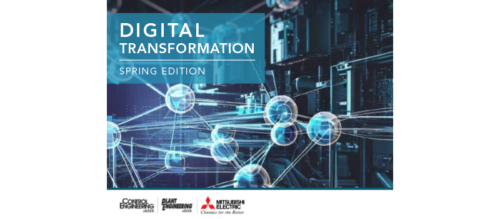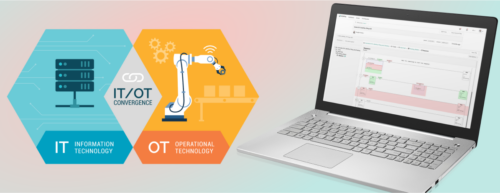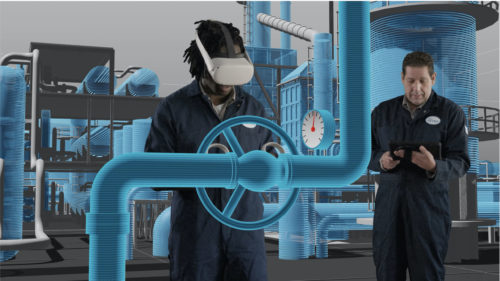Digitalization crucial for food manufacturing processes
Smart and proactive digital solutions can help support ongoing operations even through disruptive global events like the COVID-19 pandemic.
There can be no denying that the COVID-19 pandemic has laid bare the fragilities and inequities of food systems. Today food producers are facing increased pressure on their essential workforce as they try to meet fast-changing demands and there is a growing realization that there is a need for change, to ensure more agile and efficient processes to meet fast changing consumer demands.
For companies like Tetra Pak, this means that nothing has changed, while at the same time everything has changed!.Alex Bromage, food safety and quality director at Tetra Pak, said, “While manufacturing processes are as good as they have always been, there is now the need to strengthen – or even rebuild – consumer trust in the quality and safety of food. Digital solutions can achieve this by supporting a transition towards more resilient, sustainable, data driven, and most importantly, transparent food systems.”
Bromage believes that when deployed in facilities, smart and proactive digital solutions can help support ongoing operations even through disruptive global events like the current pandemic. “Through the course of the pandemic, digital technologies have been instrumental in helping our service engineers provide remote support, allowing us to connect with customers digitally, via voice, video and even direct connection to the packaging equipment electronic control systems, maintaining quality and keeping tight control of food safety through the course of the pandemic,” Bromage said.
Layers of complexity
Matthew Wells, vice president product management at GE Digital, points out that hygiene practices to protect against the spread of COVID-19 has added further layers of complexity to food production processes. He believes that digitalisation, including predictive analytics and machine learning, has a critical role to play in modeling the actions and consequences of actions in a way that is always valuable, but proves to be absolutely critical when circumstances are volatile. “Analytics can optimize production uptime, reduce waste and accelerate learnings from one plant to another, and from one line to another,” he said. “Now is the time for manufacturers to put a strong focus on optimizing production and packaging agility, not only for the situation at hand but also to prepare for future demand changes to come. This includes lowering line changeover times with rapid line changeover solutions and putting data more easily into the hands of operators to enable quick decision making.”
With so many food and beverage manufacturers still operating in a paper-based environment when it comes to information collection and reporting there is too much room for human error. “No matter how experienced people are, they will inevitably make mistakes,” continued Wells. “This situation can be exacerbated when working across a range of equipment types within 24/7 operations, with multiple employees from different shifts potentially affecting the process over the course of a day.
“Managing data from diverse equipment and multiple suppliers presents another challenge. When looking for a solution to help move from paper to data, look for manufacturing and supply chain solutions that can interface with a wide range of industrial equipment and protocols, either directly or through relevant standards. The crucial step is to digitally transform manufacturing operations to create a paperless environment”.
Growing importance
Greg Hookings, head of business development – digitalization at Stratus Technologies, believes that the pandemic has only increased the need for digitalisation within food and beverage production. “Even pre-COVID, this was important because the sector is highly regulated and food and beverage manufacturers are always striving to meet the required compliance standards. Post-COVID the compliance issues will likely only grow stronger. Any issue with hygiene could mean huge reputational damage for any brand and with COVID-19 in mind, hygiene standard lapses could mean further spreading which absolutely nobody wants.”
Citing one hygiene example, Hookings points to hazard analysis. “With the computing power now available on the plant-floor, the traditionally manual process of collecting sample lots and sending them to the lab for analysis can be easily automated which would allow data to be presented immediately to centralized quality systems.”
Hookings believes that the barrier to wider uptake of digital technologies within the food processing sector is because it is so focused on return on investment (ROI). “Without a measurable numerical answer to the question: ‘What is the ROI on the IIoT?’ digitalization can rapidly fall down the priority list. Other more quantifiable questions that food and beverage manufacturers should be asking themselves could include: What is the ROI on the continued running of a food and beverage plant? What is the ROI on real-time quality analysis? What is the ROI on avoiding a recall? By urgently advancing a digital transformation journey, enterprises are potentially avoiding catastrophic brand damage,” he says.
Taking stock
Andy MacPherson, food & beverage industry manager at Festo, was very positive in his assertion that the effects of Covid-19 on the food and beverage sector have made the industry take stock, with many starting to realize the benefits of embracing digitalisation in order to maximize the efficiency of existing equipment.
Indeed, MacPherson says that some of the larger food producers have already set up specific engineering teams who are 100% focussed on digitalization/Industry 4.0 and they are implementing many digitalisation projects on existing and new production lines. “In the UK we have also seen an increase in the use of robotics in production processes,” he said.
Of course, connectivity to existing legacy equipment and the factory’s data architecture can be a challenge – with many machines using different protocols on a single site, linking them together and extracting and interpreting data and information can be difficult. In some cases, gaining the basic wireless data can grind to a halt due to existing IT security measures. MacPherson suggests that these challenges can be overcome by involving information technology (IT) as well as production and engineering from the outset with any digitalisation project.
Source of truth
Keith Chambers, head of operations execution business at Aveva, points out that data is the only source of truth when making critical decisions and digitalisation is the only path to achieving this.
In such uncertain times resilient production relies on being adaptable – for example pivoting to deliver higher volumes of a smaller number of SKUs. “The efficiencies and improvements to production processes that may mean the difference between profit and loss must be identified and implemented through real-time data,” Chambers said. “When coupled with labour shortages, teething pains from altered production processes can become crippling. Delays too irregular or small for engineers to track without data from IIoT sensors can add up to a missed shipment or a disrupted production line. Operations today may be working with reduced people per shift – so there is likely to be fewer colleagues to assist when they get stuck with a problem. Digital technologies can help fill the gap with digital collaboration and guidance.
“Poor data governance is a common stumbling block for many food processors looking to digitally transform. With such a vast volume and velocity of data recorded across multiple variables, businesses often struggle to extract real value from it,” continued Chambers. “Having the right governance processes in place is critical to ensuring that data is collated, cleaned and organized before undergoing any analysis. The data-driven insights that result from digital transformation will only be as good as the quality of the data you put in. Digital transformation is often understood to be simply the implementation of new technologies. When approached this way, the benefits can be underwhelming. Businesses need to take a strategic and holistic approach to digital transformation. It is about fundamentally adapting your organization to become more agile and resilient so that it can better meet the needs of the customer. The benefits of digitalisation are far greater than the sum of its parts when the solution spans the enterprise, breaking production silos.”
It is a common misconception that digitization requires companies to immediately rip out legacy systems and replace them with digital processes. According to Chambers digitalisation should be a gradual and iterative process. He advises that businesses start by creating a digital twin of one asset in a factory, for example. Once it has proved its value, the technology can be applied to other assets and a network of connected assets can be established which forms the foundation of a smart factory.
“Businesses with legacy systems are set to gain the most from digital transformation. AI-powered predictive maintenance can help identify maintenance issues before they occur, reducing unplanned downtime, minimizing costs and increasing productivity,” Chambers said.
Having the vision
According to Keith Thornhill, head of food & beverage industry UK at Siemens Digital Industries, the only real barrier to the adoption of Industrial Internet of Things (IIoT) and digitalisation projects is the vision of the company. “This is the only thing holding most companies back,” he said. “It is vital to have a midterm and a longer-term view of what is needed to satisfy the demands of the consumer in the retail sector.”
Thornhill goes on to say that the vision should be guided by the need to be different in the future – agile and dynamic – aiming to have real time processes and real time data analytics. These, he said, are the features that give companies insight to actually improve and make their businesses more efficient.
“Obsolescence should not pose a problem,” Thornhill. said “It can be mitigated by adopting the right technologies. As technology vendors we are in a position where we can interface a 1970s technology at one end and future technologies at the other end and it is possible to collect data from different aged control systems and bring it all together in some standardized format. We can look at an aging production line and find the weakest link in a particular machine. And because we now have the real-time evidence, we can apply root cause analysis and tackle each condition independently – whether it is the labelling machine or the filling machine. We can analyze every aspect of an aging plant and provide a solution based on accurate ROI calculations”.
Overcoming resistance
Gary Ingram, sales manager – digital transformation at Emerson, argues that the economic and operational impacts of COVID-19 should be a driver for operational change. These changes, he says, include implementing more advanced technologies, such as touch-free operations and virtual and augmented reality technologies to enable production targets to be met with more agility and resiliency.
Ingram highlights the biggest challenge to deployment of IIoT and digitalisation projects as being resistance to change. “Digital technology empowers workers, but organizations must implement changes to work practices to maximize the ROI, so resistance to change must be addressed. The application of processes such as lean manufacturing, six sigma and value stream mapping can help to eliminate or minimize non-value work and change work processes to focus on value-added activities. But the organization needs to make its team part of the solution, mobilize stakeholders, identify sources of resistance to change, and implement strategies to overcome that resistance.”
Ingram highlights the lack of clearly defined ROI for applications and programs as being another major barrier – a recent survey by Emerson showed that over 70% of companies do not have a clear vision for data analytics and a roadmap for success. “It is essential to know the problem that needs addressing – just running analytics at data looking for insights doesn’t work. Many manufacturers find the IIoT and other enabling technologies too complex, costly and time-consuming to implement. Food and beverage producers are staffed to operate not change. Many manufacturers are finding it difficult to know which solutions, if any, best fits their own particular plant. However, the reality is there are practical, easy-to-implement steps which can be taken to make digital transformation a reality.” Ingram points out that digital transformation does not have to entail an `all-or-nothing’ type approach. “Once you figure out your production goals, design your system and assess ROI objectives, the next step is to start with a small pilot project on a few machines. We recommend starting small and scale up when appropriate.”
Conclusion
There can be no doubt that there is a requirement to look towards digitalisation and automation of food and beverage production processes to provide the agility needed to meet the fast-changing needs of the retail trade and consumers – the events of 2020 only go to confirm this imperative. There is, therefore, a requirement for everyone involved in ensuring company success – from the engineers on the factory floor, right up to director level – to inform themselves about the benefits of digitalisation, and to push forwards on the journey. As we have heard above, it is possible to do this gradually, in a manageable way which gives engineers the ability to evidence the benefits and prove the ROI. There is widespread agreement that organizations who acknowledge and accept digitalisation will be the ones that emerge as winners in a post-COVID world.
This article originally appeared on Control Engineering Europe’s website.
Do you have experience and expertise with the topics mentioned in this content? You should consider contributing to our CFE Media editorial team and getting the recognition you and your company deserve. Click here to start this process.





